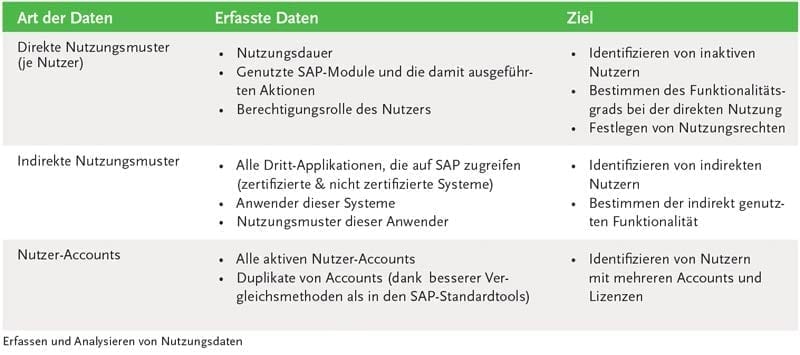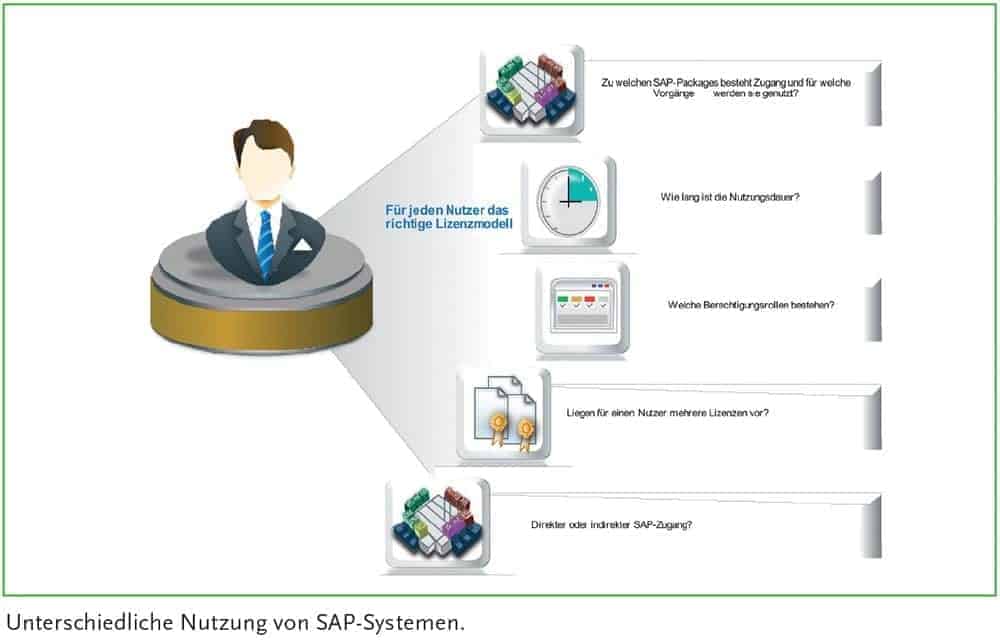SAP overlicensing is curable
![[shutterstock.com:261713198, ESB Professional]](https://e3mag.com/wp-content/uploads/2017/06/shutterstock_261713198.jpg)

Often, licenses are used beyond the contractual terms and the risk for software audits and penalties increases. However, it is even more common for more licenses to be purchased than are actually used, resulting in high costs that could be avoided.
Buying surplus licenses can be done for three reasons:
- More expensive, personal licenses are issued than are actually needed.
- A user has more than one personal license, because SAP True-up tools cannot clearly assign user accounts and persons.
- Employees retain their personal licenses even though they no longer access the SAP system.
Another important core issue for SAP customers concerns so-called "indirect use". This involves accessing the SAP system via a third-party application or another indirect route.
As a result, the challenges of SAP licensing are growing, as are the opportunities to reduce potential expenses.
SAP license management is indeed not easy. It requires detailed and comprehensible information that clearly shows how SAP software is used within a company.
This is the only way to answer important questions, such as:
- How many people access SAP software and what functionalities do they use?
- Is the usage direct, indirect via third-party applications, or even both?
- Which SAP packages are used?
- Which users have multiple accounts?
- What is the current usage level of business packages (engines)?
SAP's License Administration Workbench (LAW) does determine the degree of license compliance based on the licenses currently issued. However, LAW does not collect and analyze sufficient data for SAP license optimization.
The LAW Report only shows which licenses the company has issued. How it uses them, and whether each SAP user actually has the optimal license class to work efficiently, remains open.
But there is also good news: With appropriate software license optimization solutions, IT managers can collect extensive and detailed data about the actual SAP usage in their company.
To optimize the allocation of personal licenses, you should know how each individual person in the company uses SAP. Only comprehensive software license optimization minimizes the risks of compliance violations - in two respects:
Firstly, authorizations, permissions and usage rights are compared with the actual usage data. This enables IT to ensure that all users have a personal license of the appropriate license class.
On the other hand, software license optimization can identify all users who use SAP indirectly. These users then also receive personal licenses from IT.
Licenses for business packages are playing an increasingly important role at SAP. Cloud-on-demand, mobility (on-device) and in-memory computing (Hana) are among the most important growth areas for SAP and include all packages.
Therefore, it is important that companies consider packages in their license optimization strategy. Effective and proactive management of package licenses requires a solution that can find all SAP package installations across all SAP systems. 
It should also take into account package licensing requirements and metrics. Based on this information, consolidated reports on metrics can be created that include all SAP systems and packages - an important basis for calculating the consumption of package licenses.
SAP license optimization solutions offer companies a whole range of benefits. They eliminate unplanned true-up costs, prevent the purchase of unnecessary licenses or license types, and reduce the risk of compliance violations.
In view of the increasing controls on the part of SAP with regard to the indirect use of licenses, this is a powerful argument.






